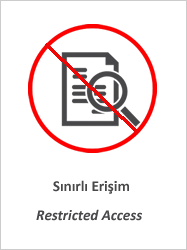Neoproterozoic continental arc volcanism at the northern edge of the Arabian Plate, SE Turkey

View/
Date
2015Author
Gürsu, SemihMoeller, Andreas
Göncüoğlu, M. Cemal
Köksal, Serhat
Demircan, Huriye
Köksal, Fatma Toksoy
Sunal, Gürsel
Metadata
Show full item recordAbstract
New geochemical, Sr/Nd isotope and zircon U-Pb LA-ICP-MS data from the Derik Volcanics in the Southeast Anatolian Autochthone Belt of Turkey are consistent with an Andean-type Cadomian arc that developed along the northern edge of the Arabian Plate during the Late Neoproterozoic. The Derik Volcanics represent a volcanic complex including andesites, rhyolites and basalts, with volcanoclastic and fluvial sediments. They are unconformably overlain by playa sediments with Early Cambrian ichno-fossils, followed by Middle Cambrian-Silurian shallow marine deposits. Geochemically, the Derik Volcanics (DV) display transitional-calcalkaline affinities. On Th/Nb-Ti/Zr diagram, DV display negative trends from rhyolites to late to early-stage andesites and mafic dykes, respectively. The REE patterns are highly to moderately fractionated, with [(La/Vb)N = 5.20-6.77 in latestage andesites, 4.38-10.51 in rhyolites, 2.58-4.65 in the early-stage andesites, and 2.51-4.21 in mafic dykes]. Normalized trace element and REE diagrams display Th, La, Ce, Sm enrichment and depletion of Nb, Ti and Eu as is typical for Andean-type active continental margin igneous rocks. The enrichment of LILE and LREE, combined with depletion of HREE also suggests that the Derik Volcanic rocks were formed in relation with a subduction zone. Negative Eu anomalies (Eu/Eu)(N), range from 0.50 to 1.81, indicates fractional crystallization of feldspar. The DV have positive epsilon(Nd) (+0.15 to +4.20) and mean model ages of 1.28 Ga for the early-stage andesites, 1.34 Ga for rhyolites, 1.35 for late-stage andesites, and 1.36 Ga for mafic dykes. The positive epsilon Nd-(T) data show that DV are product of mantle-derived magmas. Lower Nd-143/Nd-144 isotope ratios than the depleted MORB mantle (DMM) source indicate that the DV may have been contaminated by crustal material during magma genesis. Geochemical modeling shows that all four volcanic rock types may have been formed by different percentages of batch melting of DMM and subducting slab sources. Zircon LA-ICP-MS data give crystallization ages of 581.4 +/- 3.5 Ma (n = 7) and 559.2 +/- 3.2 Ma (n = 3) for the early and late-stage andesitic rocks, as well as ages of 569.6 +/- 1.6 Ma (n = 17), 571.6 +/- 1.9 Ma (n = 18), 575.4 +/- 4.3 Ma (n = 6) for the rhyolites. The geological and geochemical features together with the new age data suggest that the Derik Volcanics formed along a continental arc in the course of the southward subduction of Prototethys oceanic lithosphere along the northern margin of the Arabian Plate, which is attributed to a late-stage phase of the Cadomian Orogeny of the Pan-African cycle. (C) 2015 Elsevier B.V. All rights reserved.

















